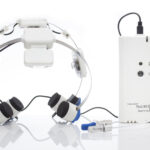The two studies below do not specifically evaluate the impact of the X39 Stem Cell Patches on any chronic conditions specifically. They do offer support on the impact of the peptide secreted by the patches on the rejuvenation of stem cells throughout the body. Stem cells facilitate healing of all chronic conditions.
Brain Sci. 2017 Feb 15;7(2):20. The Effect of the Human Peptide GHK on Gene Expression Relevant to Nervous System Function and Cognitive Decline.Loren Pickart, Jessica Michelle Vasquez-Soltero, Anna Margolina
Abstract
Neurodegeneration, the progressive death of neurons, loss of brain function, and cognitive decline is an increasing problem for senior populations. Its causes are poorly understood and therapies are largely ineffective. Neurons, with high energy and oxygen requirements, are especially vulnerable to detrimental factors, including age-related dysregulation of biochemical pathways caused by altered expression of multiple genes. GHK (glycyl-l-histidyl-l-lysine) is a human copper-binding peptide with biological actions that appear to counter aging-associated diseases and conditions.
GHK, which declines with age, has health promoting effects on many tissues such as chondrocytes, liver cells and human fibroblasts, improves wound healing and tissue regeneration (skin, hair follicles, stomach and intestinal linings, boney tissue), increases collagen, decorin, angiogenesis, and nerve outgrowth, possesses anti-oxidant, anti-inflammatory, anti-pain and anti-anxiety effects, increases cellular stemness and the secretion of trophic factors by mesenchymal stem cells.
Studies using the Broad Institute Connectivity Map show that GHK peptide modulates expression of multiple genes, resetting pathological gene expression patterns back to health. GHK has been recommended as a treatment for metastatic cancer, Chronic Obstructive Lung Disease, inflammation, acute lung injury, activating stem cells, pain, and anxiety. Here, we present GHK’s effects on gene expression relevant to the nervous system health and function.
Biomed Res Int. 2014:2014:151479. GHK and DNA: resetting the human genome to health. Loren Pickart, Jessica Michelle Vasquez-Soltero, Anna Margolina
Abstract
During human aging there is an increase in the activity of inflammatory, cancer promoting, and tissue destructive genes plus a decrease in the activity of regenerative and reparative genes. The human blood tripeptide GHK possesses many positive effects but declines with age. It improves wound healing and tissue regeneration (skin, hair follicles, stomach and intestinal linings, and boney tissue), increases collagen and glycosaminoglycans, stimulates synthesis of decorin, increases angiogenesis, and nerve outgrowth, possesses antioxidant and anti-inflammatory effects, and increases cellular stemness and the secretion of trophic factors by mesenchymal stem cells.
Recently, GHK has been found to reset genes of diseased cells from patients with cancer or COPD to a more healthy state. Cancer cells reset their programmed cell death system while COPD patients’ cells shut down tissue destructive genes and stimulate repair and remodeling activities. In this paper, we discuss GHK’s effect on genes that suppress fibrinogen synthesis, the insulin/insulin-like system, and cancer growth plus activation of genes that increase the ubiquitin-proteasome system, DNA repair, antioxidant systems, and healing by the TGF beta superfamily. A variety of methods and dosages to effectively use GHK to reset genes to a healthier state are also discussed.



 hydrophilic, making it easily absorbed into the body. It provides accelerated, increased absorption and potency and acts as an anti-bacterial and prebiotic. CBD has been known to support healthy blood sugar levels, promote healthy energy levels, relieve anxiety, aid in digestion, support optimal immune function and the regeneration of healthy cells, and promote a sense of serenity and overall well-being.”
hydrophilic, making it easily absorbed into the body. It provides accelerated, increased absorption and potency and acts as an anti-bacterial and prebiotic. CBD has been known to support healthy blood sugar levels, promote healthy energy levels, relieve anxiety, aid in digestion, support optimal immune function and the regeneration of healthy cells, and promote a sense of serenity and overall well-being.”